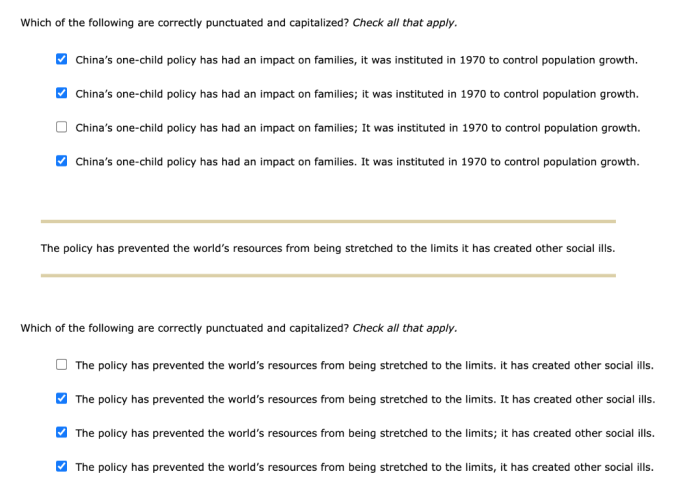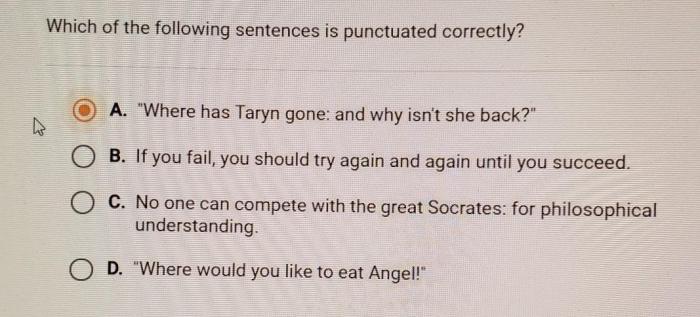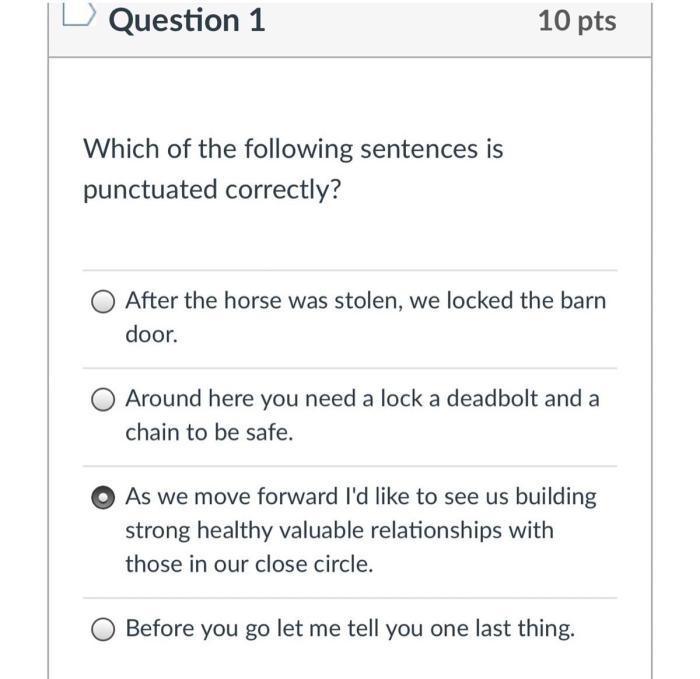Which of the following lines of dialogue is punctuated correctly? This question delves into the intricacies of dialogue punctuation, a crucial element in written communication. Understanding the rules and nuances of punctuation allows writers to convey tone, character, and context effectively.
This comprehensive guide explores the various types of dialogue punctuation, the general rules governing their usage, and common errors to avoid. It also examines how punctuation can vary depending on the context and style of the dialogue.
Types of Dialogue Punctuation

Dialogue punctuation serves to clarify who is speaking and to indicate the tone and structure of the conversation. There are three main types of dialogue punctuation: quotation marks, commas, and dashes.
- Quotation marksenclose the exact words spoken by a character. They are used for both direct and indirect speech.
- Commasare used to separate the speaker’s tag from the dialogue. They can also be used to indicate pauses or interruptions in speech.
- Dashescan be used to indicate a sudden break or interruption in speech, or to emphasize a particular word or phrase.
Punctuation Rules for Dialogue
The general rules for punctuating dialogue are as follows:
- Quotation marks should be placed at the beginning and end of the dialogue.
- Commas should be placed after the speaker’s tag, unless the dialogue is a question or exclamation.
- Dashes should be used sparingly and only when necessary to indicate a sudden break or interruption in speech.
There are some exceptions to these rules. For example, quotation marks are not used for indirect speech. Additionally, commas may be omitted if the speaker’s tag is very short, such as “he said” or “she asked.”
Common Punctuation Errors in Dialogue: Which Of The Following Lines Of Dialogue Is Punctuated Correctly

Some common punctuation errors that are made in dialogue include:
- Missing or misplaced quotation marks
- Incorrect comma placement
- Inconsistent use of dashes
These errors can make dialogue difficult to read and understand. It is important to proofread your dialogue carefully to ensure that it is punctuated correctly.
Punctuation in Different Dialogue Contexts

The punctuation of dialogue can vary depending on the context of the dialogue. For example, the punctuation of spoken dialogue is often more informal than the punctuation of written dialogue. Additionally, the punctuation of dialogue can vary depending on the formality of the conversation.
For example, the punctuation of dialogue in a formal setting is often more formal than the punctuation of dialogue in an informal setting.
Punctuation and Dialogue Style

Punctuation can be used to convey different styles of dialogue. For example, the use of exclamation marks can convey excitement or anger, while the use of ellipses can convey hesitation or uncertainty. Additionally, the use of dashes can convey a sudden break or interruption in speech.
By understanding the different types of dialogue punctuation and the rules for using them, you can effectively convey the tone and structure of your dialogue.
FAQ Compilation
What are the different types of dialogue punctuation?
Dialogue punctuation includes quotation marks, commas, dashes, and parentheses. Each type serves a specific purpose, such as indicating the start and end of speech, separating dialogue from narration, and conveying emotions.
What are the general rules for punctuating dialogue?
Dialogue is typically enclosed within quotation marks. Commas are used to separate dialogue from narration and to indicate pauses or interruptions. Dashes can be used to indicate a sudden break or change in tone.
What are some common punctuation errors in dialogue?
Common errors include missing or misplaced quotation marks, incorrect comma placement, and inconsistent use of dashes. These errors can disrupt the flow of dialogue and make it difficult for readers to understand.